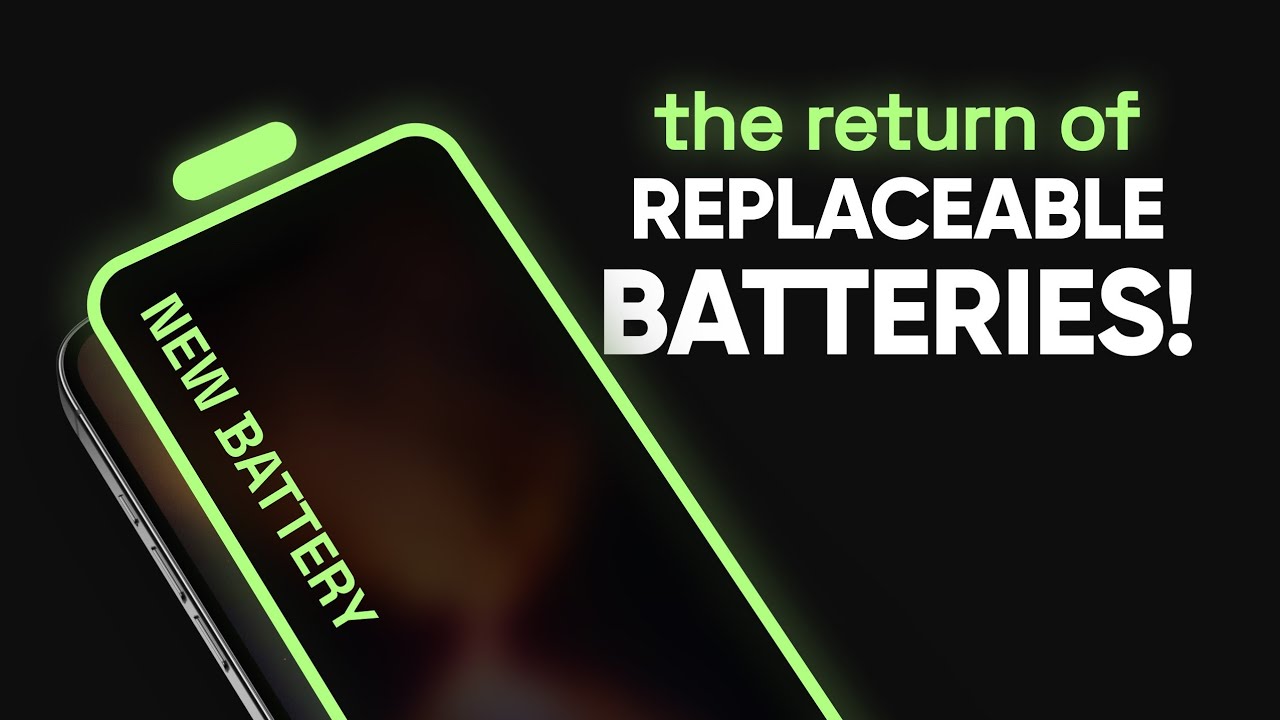Honestly, with Apple making it incredibly fucking hard to take out their batteries with excessive amounts of glue, I’m okay with this.
Do they not have the tabs you can pull out anymore?
They do, but they’re incredibly prone to breaking when you pull and sometimes they’re just hard as shit to grip so you have to use a screwdriver to twist and pull.
I don’t think I need to explain why that’s so dangerous.
As someone who has changed hundreds of iphone batteries, the adhesive sucks. At least they changed to a different adhesive around iphone 8 because alcohol does wonders on it. I don’t even attempt to pull the tabs on those anymore.
May I ask how you do that? Do you just…douse the battery in alcohol? There isn’t much of a gap between the adhesive and the battery in my experience, so it just sits inside the chasis and rolls around. I haven’t had any luck with that but I’m probably doing it wrong.
I drizzle some in the corner and then use a sturdy tool to gently pry up on the battery to allow the alcohol to get deeper under. Since the adhesive patches are small to fit around the wireless charging coil, it doesn’t take much. Once you get one side of the battery loose the other will easily come with it, especially if the alcohol got to them.
Fingers crossed that this will be implemented well, im tired of having sleek electronics be irrelevant in 2 years when the silicon could go for 5 or six
The silicon could go on for decades if both the modem and processor were fully documented hardware that the community can access and support in the Linux kernel.
I can run a secure and current form of Linux on 30+ year old hardware if I want to, because the hardware documentation was expected by everyone at the time even if some end users were oblivious to what this meant. The whole reason google pushes Android is because they provide a base Linux kernel that hardware manufacturers can easily slip their proprietary junk into without requiring them to add the kind of open source code needed for mainline kernel support by the community. This is the mechanism that depreciates your device. It is totally artificial and an end user exploitation by design.
It’s usually not silicon on the PCB that fails, but the other electronic components (usually the capacitors) that fails first, and since they are surface mounted devices it’s really difficult to solder them by hand.
Nice, good to know! And you were awesome in the Suicide Squad series
Thank you! Go see “Barbie” in theater too!
There are no electrolytics in phones, and most newer phones don’t even have tantalums. So long as there are no flexing stresses induced, which is nearly impossible with the way phones are constructed now, the all MLC capacitors construction has the potential to outlast any PC motherboard or laptop by a large margin.
The most critical issue is board connectors and moisture ingress. The USB-C connector or any other high pin density micro sized connector with a tiny pin pitch, and large electrical potential will fail from charge cycling and a resistance forming between pins. USB-C is particularly bad because reversing the connector doubles the number of pins on the board in a ridiculous amount of space. Just using a standard USB-C connector when ordering a prototype to be fabed at any common board house will double the price. The USB-C pin pitch is too tight for the most common fab process resolution.
The pin pitch only matters for high power application to prevent arcing, and that can also be resolved through the most modern USB-PD standard (See: USB-PD Extended Power Range, which can support up to 240w), and the electrical adjustment you have to make are all on the device side.
I don’t know about the resistance forming between the pins, for low cycle applications the cheapest gold flash plating would easily last 10K plug cycles, and accounting for corrosion from hand sweat/oil/hand lotion, many companies favor going for thicker hard gold or platinum plating nowadays. (Rhodium is the absolute best, but it’s just too expensive now to do at scale because they are used in catalytic converters for electric cars). USB-C lasts for many more cycles than the Micro-USB standards before it (You can read the 4 axis and wrenching test standards for mechanical testing on the USB spec) so I’m not sure what you are talking about here.
Lab tests rarely reflect the real world. I’ve seen several issues with Pixels that had an issue with PD failing due to moisture, corrosion, and a bridge developing at the connector.
Actually, no, the lab tests are standard with all products of all large companies, and they are usually conducted in extreme conditions, like 100% moisture at 80-90C oven for 48 hours and highly concentrated salt spray kind of extreme.
You bring up the example of Google Pixel, yeah, because it’s Google, they are software people who think they can just cheap out on hardware and save a couple of cents by making it up in software. Look at the Nexus 5X and 6P, both devices had an absurd amount of quality control issues compared to the other products made by the manufacturers, and the only factor in common between them is Google.
Things change with time. The Pixel is now the most secure phone available due to its hardware encryption key verification system. It is the only phone that can run a verifiably secure bootloader and ROM on top of the same untrusted hardware situation found in all modern proprietary devices. Running a Pixel on Graphene OS is the most free and honestly liberating experience that has been available since the invention of capacitive touch technology made these handheld computers popular. The hardware build is on par with any similar device of the same price point, made in the same facilities as most devices.
Add to that requirements for longer software support. At least for security patches.
Stupid plain simple, increase in weight.
I’ve not taken apart a brand new iPhone foe a while, but the way they used to do it where you take out two screws and then everything comes apart without tons of glue… well, it’s great. There’s no reason phones can’t all be built like that.
So?
I’m with you. In a modern phone I’ve never wanted to replace the battery. In the past I’ve never had a replacement be nearly as good as the original so once I had to start replacing it, it was just a battle from that point. I think this will generate more ewaste as manufacturers will overproduce batteries.
deleted by creator
My old Galaxy S5 was water resistant (IP67, 30min/1 metre submerged)

The rear cover had a gasket to prevent water entering the motherboard, micro sd, battery, sim etc.
I used a hammy down s5 for a few years. Just had to replace the battery and it was good to go. It eventually degraded and became really really slow. Good phone.
I’ve never understood the whole waterproof thing. I’ve never been in an instance where my phone was in any danger of getting wet. I get float trips and stuff but that seems like an uncommon case and even then there are ways to waterproof a phone temporarily.
People mount phones to bike handlebars for navigation. Then it starts raining.
That seems like an edge case though.
You don’t use your phone on the bathroom or the kitchen? It never rains where you live? You never keep your phone in your pocket next to a sweaty leg?
I want a phone that can survive minor issues. I don’t want a phone that will die because it slipped into the sink while washing my hands or something like that. A degree of being waterproof does that.
This. If you really want to take your phone on your extreme surfing adventure, just put it in a waterproof case!
I don’t think a phone needs to be 100% waterproof to 50 metres, but some amount of water-resistance is just good product design. Companies should not be encouraging people to dunk their phones in water, I think IP ratings sadly encourage this as well as some of the advertising around their water resistance claims.
But having some amount of water resistance built into electronics helps reduce e-waste because accidents do happen. For more serious water activities people should be buying waterproof bags for their electronics.
Motorola Defy was waterproof with removable battery. A small switch locked the cover in place with a rubber gasket. This was over 10 years ago.
Removed by mod
Phones are getting more expensive so people are holding on to them longer, so it’s a nice quality of life improvement to remove the barriers to battery replacement so less people have to go down to a phone repair store to get it changed. The more of a hassle battery replacement is seen the more likely people are to just upgrade and create e-waste.
The problem here is that in order for most people to be able to replace the battery themselves safely they need to be really idiot proof. We’d need to return to back covers with latches or big screws and batteries in cases and contacts. This shit is bulky, heavy and hardly waterproof.
New iPhones use lipo pouch with a ZIF connector straight to the motherboard with a “pull to release” adhesive strip hidden under a panel with a single use sticky seal and two small screws. There is no black magic in replacing the battery yourself and the solution is small, lightweight and waterproof. However most people wouldn’t even know which way to turn the screws to loosen them and probably wouldn’t be bothered by throwing the phone away and getting the one with a better camera AI and more emojis.
@riodoro1 @NightOwl I dunno, if you compare capacities of say, iPhone 14 Pro (12.38Wh) to Fairphone 4 (15.03Wh) and then the product dimensions of the two. There’s not a huge amount in it. Adding the 14 Pro Max (16.68Wh) for additional comparisons.
The Fairphone is 2.6mm thicker than the iPhones. (Yes the screen bezels are chonk too lol) But the fairphone is also making allowance to make every single component swappable, and has an IPS display (switching to OLED would save 1+ millimeter)
Yeah, I wish there was some advancements made when it came to trying to create swappable battery devices that retain water proofing. That area has just stalled since expensive disposable tech is more lucrative. Average person should just get a new one like you said as long as the process is still more difficult than changing a light bulb.
Yeah, I wish there was some advancements made when it came to trying to create swappable battery devices that retain water proofing.
If nothing else, regulations like the one described in here will do just that. So far the tech giants haven’t had any incentive to design sleek, waterproof devices with replaceable batteries. But you’ve gotta believe that if they’re required to have replaceable batteries, they’re not going to say “OK, back to chonky non-waterproof devices for us!”. They’re going to spend some of their R&D budgets to innovate ways that makes it more realistic to do all three.
The original Moto Defy got it right the first time with ip67 rated, removable battery, expandable storage, and a headphone jack. The next major improvement came with the xperia z(or z3) and they got waterproof charge ports and headphone jacks (no port plug required) but ditched the removable battery. Every other phone since seems to have stripped away some useful feature since. The new defy 2 is going to have satelite messaging but is huge and no removabpe battery or headphone jack iirc.
Nah, the og motorola defy had removable battery, ip67 rating, expandable storage, and a headphone jack. It was a tiny phone and it was brilliant.
my first smartphone was an lg optimus s. that thing saw more toilet time than my butt. i lost track of how many times i dropped it in the toilet. it went in a lake a few times, also. it was a beast
@Know_not_Scotty_does @riodoro1 for some reason when I was 16 I really wanted the Defy Mini (XT320)
Though it wasn’t ever cheap enough for my allowance 🤣 probably for the best, my first android smartphone came a couple years later in the Vodafone Smart 4 Turbo. (snapdragon 410 version)
[edit: deleted, echo chamber here. Android good, Apple bad. Moving on and blocking this community, can’t have a reasonable conversation, just like reddit I guess].
How is this an Android vs Apple thing? Most of the major manufacturers are making devices with the battery sealed in; they’ll all have to innovate ways of making them removable.
The difference is that most of the people isn’t expected to own a mechanical watch, but having a smartphone is pretty much expected. You cannot treat a basic commodity as if it were a luxury item.
[edit: deleted, echo chamber here]
People disagreeing with you isn’t what an echo chamber is.
One of the few areas where I favor a “One-world” standard.
AA it is!
I love reading such headlines, really glad there’s an entity that can enforce such rules on manufacturers, at least when they’re looking after us
I’m curious to see what this will mean for phone designs & dust/waterproof ratings. Either way, it only takes effect in 2027 so that should give some time for innovation rather than falling back on plastic clamshells of yore.
The waterproofing has been solved, but the real issue is that device size and/or battery capacity is going to be affected. And with the resiliency of modern batteries, you’re making design sacrifices for something that won’t affect most users.
Sure, it was nice being able to swap a fresh battery in on the fly. But these days you can also just get a decent power bank for less money than a proprietary battery pack.
A middle ground would end up being better for everybody. Keep the batteries as they are now, but make the phones a bit easier to open (and use fasteners instead of adhesives).
Same with Fairphone. They’re specifically made to be repairable, and the Fairphone 4 is supposed to be water resistant. Too bad the specs aren’t great.
Yeah gaskets have existed for a hundred and fifty years or more so it won’t take great feats of engineering to solve this issue. I personally don’t care if my phone is waterproof or not since it’s ingrained in me not to get them wet from years of using electronics prior to waterproofing being common. Maybe adding a removable back will mean the end of camera bumps too.
That link is dead for me. I wonder what constitutes “removable”. I’d honestly be fine if it still required a spludger, but it required them to make it easily accessable and not loaded down with glue once you’re in. And make OEM batteries available for sale.
i would be fine if it needed some tool to stay water tight or whatever atleast make it easily exchangeable doesnt need to be the old removeable plastic backs.
Amen! Now let’s see how Apple gets around that one too. :)
Holy. 👍
I wonder how thick phones will be because of this, what about phones with dual-cell battery? I know some of them do this for faster charging speed.
I had a cubot power which had an “non-removeable” battery. The running time was about two days with medium usage. I thought probably they packed every remaining space with battery which explains a non removeable one.
So I broke it a few weeks ago and decided to check out the battery. Turns out it was just that they glued the shit out of the backplate (which was more work to get of than the screen which glue already gave up) and put a normal sized battery in wich had no quick connector attached, but one of those flimsy wires that fall apart if you look at them wrong. The same shit apple introduced in their ipods.
There is and never was any reason for “non removeable batteries” other than prohibiting the user from repairing the most common failure point of a phone!
There were 8mm(0.31in) thick phones with removable batteries 5-6 years ago(phones like the Samsung J series).
iphone 14(fall 2022) does not feature a removable battery and is 7.8mm(0.309in).
Meaning you literally wont be able to tell the difference.
In fact, there were 7.5mm ones with a replacable battery a few years ago.
Absolutely nothing will change You can already swap the battery very easily, once you win the fight with the glue. Granted, most of the recent phones now allows removing said glue more or less easily, too. The only problem i can see are the IP ratings, as the backplate would need to be swappable
I don’t think the IP ratings are gonna be that much worse.
The galaxy s5 had IP67 with a removable battery back in 2014.
another EU win!!!
i hope they mandate RCS for buyphones, the pear company has been holding back technical progress worldwide
What is RCS for buyphones?
RCS messaging for iPhones. Apple is basically never going to do it because iMessage is a big part of the iPhone lock in.
I might be in the minority here, but I feel this is actually a step back.
In the 5 years I’ve had my phone, there have been two times I’ve ever really needed to pull the battery, and still the hard reset sequence still eventually worked in both cases.
Anyone remember how some phones had issues with the battery door becoming somewhat loose over time, causing any slight bump to turn the phone off? Many have already commented on how they explode into multiple pieces when dropped. Traditionally the battery covers are incredibly flimsy plastic, even on flagship devices (cough Samsung). Waterproofing is a common concern too, however it actually can be done with a removable battery (e.g. Galaxy S5).
What really needed to be addressed here was how cumbersome it is to get into these devices to replace the battery, and how often people are price gouged to replace them. I believe this could have been better written to allow for either a removable battery, or a standardized and affordable built-in battery replacement process.
This will come into play at roughly the same time that solid state batteries will make battery replacement mostly irrelevant. We’ll see some terrible designs to accommodate battery replacements that, for the most part, won’t be used.
I’ll believe that once I see it… We have been told the era of next gen batteries is just around the corner every year since the iPhone came out now. We’re still using some version of lithium based tech in most applications where power density is important (phones, laptops, cars, etc.)
Good point.
Good, it’s a small victory but one step closer to a society that doesn’t create waste just to buy the next new shiny toy. Products should be build to last, be easily repairable and create as little waste as possible (which isn’t possible in a system that demands unlimited growth over anything else). If we want to have a somewhat ok climate in the future, just focusing on electric vehicles (which are doing the whole subscription to access your hardware fully, not easily repairable bs as well) isn’t gonna cut it.
I actually love all these regulations on smartphones (mainly by the EU), like the recent USB-C standard. That one in particular makes it so much easier to share chargers around the house!
As a USA citizen, thanks EU for making our cellphone companies not be dick’s.
USB-type C to become EU’s common charger by end of 2024
I mean… Sure, but we’ve had USB-C as de facto standard for many years now. When was the last time you saw a micro USB phone?
aa
Couldn’t agree more, two years ago I was gifted a small wireless speaker which works fine and everything but I sometimes even forget to charge it because its cable is a 15cm short USB-A to Micro-USB one which somehow is the only Micro-USB cable I have left at home as I didn’t have any other device with that port in years and I had thrown away a few cables when I last moved. Now whenever I am looking for a new electronic device USB-C is one of the first things I check and it’s a deal breaker for me.
I don’t want to brag but my 5 yo phone is micro USB. B)
USB-C is standard for Android devices, but Apple devices still use lightning.
I know, but the person I was replying to made it sound like EU regulation is to thank for Android devices having USB-C





















